UPSC Daily Current Affairs: 11th April 2025 | Current Affairs & Hindu Analysis: Daily, Weekly & Monthly PDF Download
GS2/International Relations
150th Assembly of the Inter-Parliamentary Union (IPU)
Why in News?
On April 8, 2025, Lok Sabha Speaker Om Birla delivered the keynote address at the 150th Assembly of the Inter-Parliamentary Union (IPU) held in Tashkent, Uzbekistan. This event highlights the ongoing efforts in fostering international dialogue and cooperation among parliaments worldwide.
Key Takeaways
- The IPU serves as a global platform connecting national parliaments and promoting democratic values.
- Established in 1889, the IPU is recognized as the first multilateral political organization aimed at fostering international cooperation.
Additional Details
- Inter-Parliamentary Union (IPU): The IPU is headquartered in Geneva, Switzerland, and is composed of 181 national Member Parliaments and 15 Associate Members, which are primarily regional parliamentary bodies.
- Moto: The organization operates under the motto "For democracy. For everyone."
- Founders: It was founded by William Randal Cremer and Frederic Passy, both of whom received the Nobel Peace Prize in 1901 for their efforts in promoting peaceful arbitration to resolve international disputes.
- Core Functions: The IPU advocates for stronger, inclusive, and diverse parliaments and defends the human rights of parliamentarians, organizing biennial assemblies for international collaboration.
- India's Participation: India is represented in the IPU through the Indian Parliamentary Group (IPG), established in 1949. The Speaker of the Lok Sabha serves as the ex-officio President of the IPG, with the Deputy Speaker and Deputy Chairman of the Rajya Sabha as Vice Presidents.
The IPU has a rich history of involvement in significant global governance issues, including the establishment of the Permanent Court of Arbitration in 1899 and the groundwork for the League of Nations in 1919. It continues to play a vital role in addressing modern challenges, including the implementation of the 2030 Agenda for Sustainable Development.
GS2/Polity
The Issue with Delimitation’s Population-Based Process
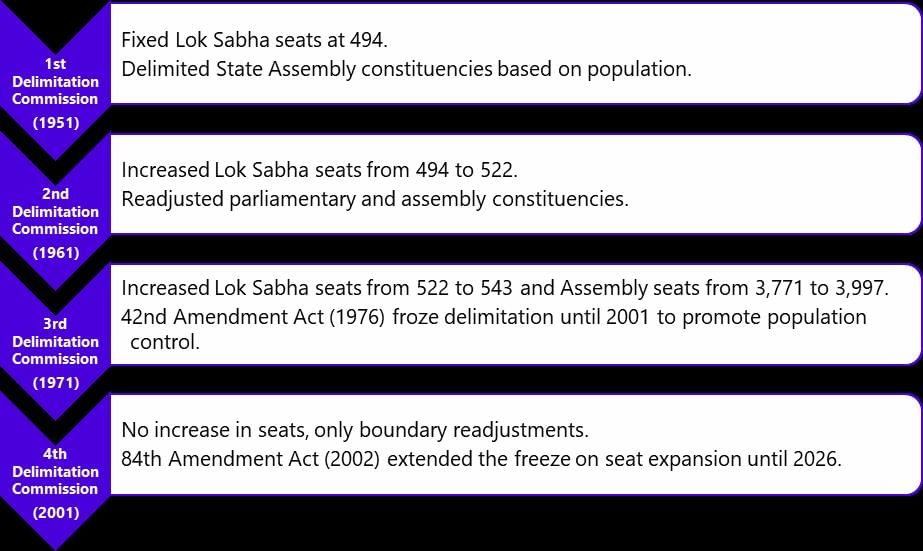 Why in News?
Why in News?
The process of delimitation, which involves redrawing electoral constituency boundaries based on census data, is a constitutional requirement in India as outlined in Articles 82 and 170. While this exercise aims to uphold democratic principles, it has ignited extensive discussions regarding its implications, the historical context, and the necessity for a more nuanced approach to representation within the framework of federal democracy.
Key Takeaways
- Delimitation has historically seen significant changes in Lok Sabha and Vidhan Sabha seat allocations based on demographic shifts.
- The current population-based delimitation process raises concerns about regional disparities and representation fairness.
Additional Details
- Historical Context: Between 1951 and 2004, Lok Sabha seats rose from 489 to 543, reflecting demographic changes. Each MP's average constituency size increased from approximately 7.32 lakh in 1951 to 27 lakh by 2024.
- Constitutional Mandate: The Constitution requires constituency adjustments post-census, but the 42nd Amendment in 1976 deferred this process until after the 2026 census.
- States with high population growth may gain representation, while states with effective population control policies could be penalized, raising questions about the fairness of purely population-based representation.
- Rethinking Representation: The debate emphasizes the need to reconsider what representation means, suggesting that enhancing local governance may be more beneficial than merely increasing the number of representatives.
- Proposed Solutions: Suggestions include employing a deflator for population numbers in representation calculations, using metrics like Total Fertility Rate (TFR) to achieve a balanced representation.
In conclusion, delimitation is not just a technical task but a politically charged process with significant repercussions for national unity and democratic representation. While population remains a critical factor, it should not be the sole criterion, necessitating a more comprehensive approach that considers demographic trends, governance efficiency, and regional equity.
GS1/History & Culture
Jyotiba Phule: Pioneer of India’s Social Awakening
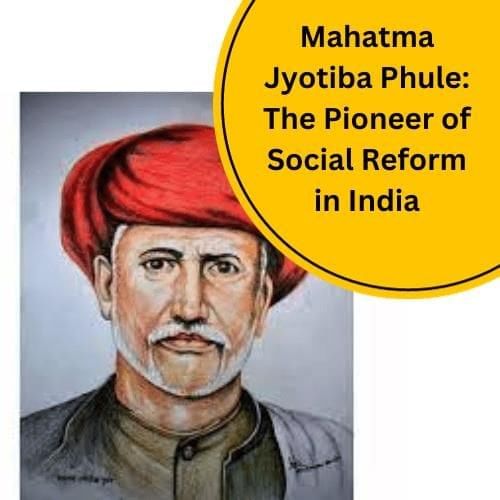 Why in News?
Why in News?
Prime Minister Narendra Modi paid tributes to Jyotiba Phule on his birth anniversary falling on April 11.
Key Takeaways
- Jyotiba Phule was a significant thinker and social reformer who fought against caste oppression and gender inequality in 19th-century India.
- He established India’s first girls’ school and advocated for the education of the underprivileged.
Additional Details
- Early Inspirations: Phule’s mission began after experiencing caste-based humiliation, prompting him to combat social discrimination with education and activism.
- Satyashodhak Samaj: Founded in 1873, this society aimed to challenge upper-caste dominance in reform movements.
- Education Advocacy: He pushed for compulsory primary education for all, particularly focusing on the marginalized, emphasizing scholarships and incentives for rural children.
- Spiritual Philosophy: While critical of religious orthodoxy, Phule respected faiths that promote equality and advocated for a rationalist approach to spirituality.
- Agricultural Reforms: He proposed innovative agricultural solutions, such as employing soldiers for civil works and advocating for better support for farmers.
- Women’s Rights: Phule defended women’s rights and argued for gender equality, critiquing practices like polygamy and double standards in religious contexts.
Jyotiba Phule's enduring legacy continues to inspire social activism in India, as his foundational work in education and social reform has laid the groundwork for ongoing discussions about caste, equality, and justice.
GS3/Defence & Security
INS Varsha Naval Base - Security Issues
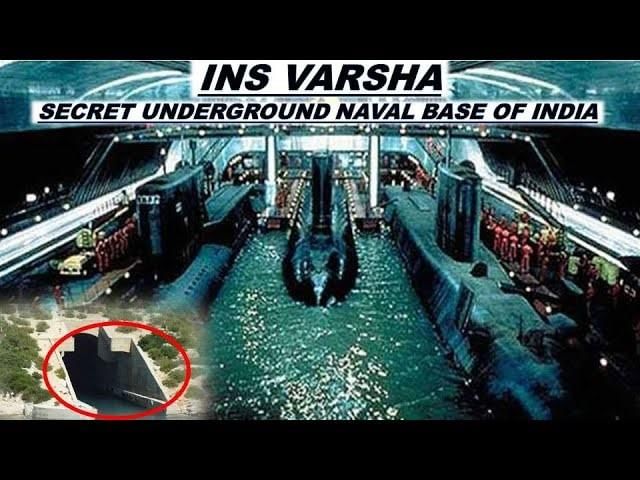 Why in News?
Why in News?
India is on track to operationalize INS Varsha, a pivotal naval base specifically designed for nuclear-powered submarines, by 2026. This base will be located along the eastern coast near Rambilli in Andhra Pradesh.
Key Takeaways
- INS Varsha will serve as a specialized facility for India's expanding fleet of nuclear submarines, including Nuclear-Powered Ballistic Missile Submarines (SSBNs) and Nuclear-Powered Attack Submarines (SSNs).
- It is strategically located about 50 km south of Visakhapatnam, near the Eastern Naval Command.
- The base is designed to cover an area of 20 square kilometers and accommodate at least 10 nuclear submarines.
Additional Details
- Location and Design: INS Varsha will be situated at the confluence of the Sarada and Varaha rivers, featuring underground pens and tunnels to facilitate stealthy operations.
- This design enables submarines to enter and exit undetected, which is critical for maintaining the stealth of SSBNs during long patrols.
- Similar to China's Hainan Island submarine base in the South China Sea, INS Varsha's location allows for operations that are less susceptible to satellite surveillance.
- Project Varsha: INS Varsha is a key component of Project Varsha, a classified initiative aimed at enhancing India’s maritime deterrence capabilities in response to China's increasing naval presence in the Indian Ocean Region (IOR).
This project is essential for supporting the fleet of Arihant-class submarines, which play a critical role in India’s sea-based nuclear deterrent strategy.
GS3/Environment
CPCB Revises Classification of Industries
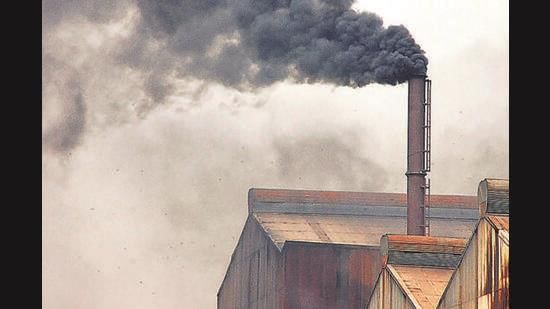 Why in News?
Why in News?
The Central Pollution Control Board (CPCB) has recently updated its classification of industries, introducing a new category known as the ‘Blue Category’ to enhance environmental management.
Key Takeaways
- The CPCB classifies industries based on their environmental impact, focusing on air pollution, water pollution, and hazardous waste generation.
- Industries are assigned a Pollution Index (PI) that helps categorize them for regulatory purposes.
- The newly introduced Blue Category recognizes industries providing Essential Environmental Services (EES).
Additional Details
- Pollution Index (PI):This index is calculated considering air, water, and waste pollution with equal weightage for each factor. The categories are:
- White: PI < 20="" (least="" polluting="" />
- Green: 21 ≤ PI < />
- Orange: 41 ≤ PI < />
- Red: PI > 60 (most polluting industries)
- Blue Category:This new category includes industries that manage pollution through services like:
- Waste-to-energy plants
- Sewage treatment plants
- Landfill management
- Industries categorized as Blue must still comply with all environmental norms, and their PI is calculated as per the existing standard formula.
- Industries that demonstrate successful management practices may qualify for extended operating permits and additional incentives.
The classification system is regulated by the Ministry of Environment, Forests, and Climate Change (MoEFCC) to enhance environmental standards across various industrial sectors.
GS3/Economy
Trump Administration’s Push to Classify Coal as a Critical Mineral
 Why in News?
Why in News?
In an effort to enhance coal production in the United States, President Donald Trump has officially designated coal as a "mineral". This move aims to prioritize coal extraction and bolster domestic production, aligning with the administration's broader goals of energy independence and manufacturing resurgence.
Key Takeaways
- Coal is classified as a "critical mineral" under the US Energy Act of 2020.
- The administration has relaxed environmental regulations to support the coal industry.
- Coal's role is seen as vital for stabilizing the power grid amid rising energy demands.
- Concerns regarding environmental sustainability and climate change persist.
Additional Details
- Strategic Rationale: The classification of coal as a critical mineral underlines its importance for national security and economic stability, particularly in steelmaking through coking coal.
- Environmental Implications: Critics argue that this shift towards coal could undermine efforts to meet net-zero emissions targets, as coal is the most carbon-intensive fuel.
- Global Context: Other nations, including India, are also recognizing the strategic significance of coal, particularly in energy planning and security.
- Industry Impact: The deregulation is expected to benefit industries reliant on coal, such as steel and cement, by reducing dependence on imports and strengthening domestic supply chains.
In summary, the Trump administration's initiative to reclassify coal as a "critical mineral" signals a significant change in US energy policy. While it may address immediate energy needs and industrial demands, it raises critical questions about the balance between energy security and environmental sustainability in the coming years.
GS2/International Relations
Taiwan Strait
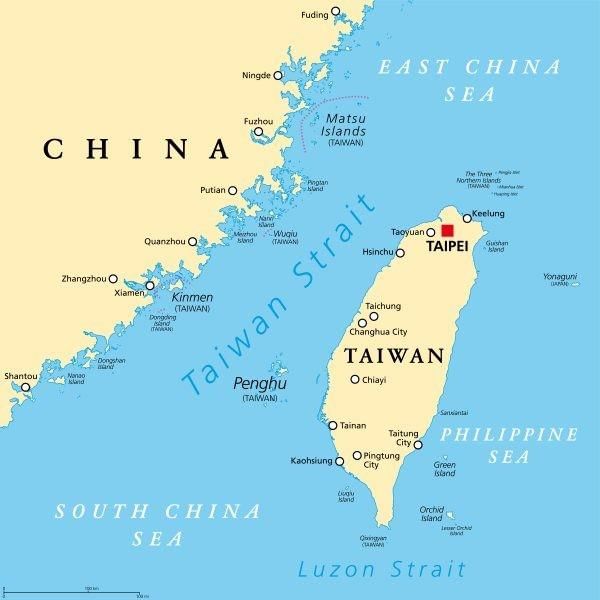 Why in News?
Why in News?
Recently, China has initiated aggressive military drills in the Taiwan Strait, a move that raises concerns regarding regional stability and international relations.
Key Takeaways
- The Taiwan Strait is a crucial body of water separating mainland China from Taiwan.
- It plays a significant role in global trade, with nearly 40% of the world's container ships passing through it annually.
- The strait has a rich history of military and political tensions, especially since the end of the Chinese Civil War in 1949.
Additional Details
- Geographical Significance: The Taiwan Strait is approximately 180 kilometers wide at its broadest point and narrows to about 130 kilometers. It connects the South China Sea to the East China Sea and is relatively shallow, with average depths around 70 meters (230 feet).
- Historical Context: The strait has been a focal point of military tensions, particularly during the Taiwan Strait Crises of 1954-55 and 1958, when the People's Republic of China (PRC) conducted artillery bombardments on Taiwan-held islands, leading to U.S. intervention.
- The strait is also known for its abundant fishing grounds, hosting over a hundred economically important fish species.
The Taiwan Strait remains a vital geographical and political area, influencing both regional security dynamics and global trade routes.
GS2/International Relations
Extradition of Tahawwur Rana - A Diplomatic and Legal Triumph in the 26/11 Mumbai Terror Attack Case
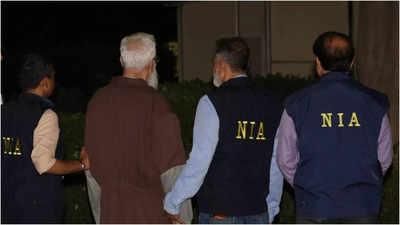 Why in News?
Why in News?
Over 16 years after the devastating 2008 Mumbai terror attacks, the key conspirator Tahawwur Rana has been extradited from the United States to India. His extradition represents a significant achievement in India's counterterrorism endeavors and underscores the effectiveness of ongoing diplomatic, legal, and intelligence collaboration between India and the US.
Key Takeaways
- Tahawwur Rana's extradition is a major milestone in counterterrorism efforts.
- It highlights the strong diplomatic relations and cooperation between India and the US.
- The process involved extensive legal proceedings spanning over a decade.
Additional Details
- Background of the 26/11 Mumbai Terror Attacks: The attacks occurred from November 26 to 29, 2008, resulting in 166 fatalities and over 238 injuries. The assaults were executed by 10 Pakistani terrorists associated with Lashkar-e-Taiba (LeT), targeting locations such as the CST railway station and the Taj Mahal Hotel.
- Tahawwur Rana: A Pakistani-born Canadian citizen and former officer in the Pakistan Army Medical Corps, Rana was a close associate of David Coleman Headley, a key scout for LeT. He was arrested in Chicago in October 2009 for his role in providing logistical support for the attacks.
- Legal Proceedings: The US Magistrate Court approved his extradition after rejecting the double jeopardy defense, and the US Supreme Court subsequently denied any relief, finalizing the extradition process.
- Political and Diplomatic Significance: The extradition was facilitated by the India-US Extradition Treaty, supported by various US and Indian legal and security agencies. Prime Minister Modi expressed gratitude towards the US for its assistance in India's pursuit of justice.
The extradition of Tahawwur Rana not only brings justice for the 26/11 attacks but also reinforces the commitment of both nations to combat terrorism through collaborative efforts.
GS2/Polity
Are Existing Mechanisms Effective in Combating Judicial Corruption?
Why in News?
Recently, a substantial amount of unaccounted cash was discovered at the official residence of former Delhi High Court judge Justice Yashwant Varma. This incident prompted Chief Justice of India, Sanjiv Khanna, to initiate an internal inquiry into the matter.
Key Takeaways
- The appointment process of judges is crucial for preventing corrupt individuals from entering the judiciary.
- Judicial accountability mechanisms currently in place are often slow and lack transparency.
- There is a growing demand for transparency in judicial inquiries to enhance public trust.
Additional Details
- Limitations of the Impeachment Process:
- High Threshold for Removal: Impeachment requires a two-thirds majority in both Houses of Parliament, making it difficult to remove a judge even with credible allegations. For instance, no judge has been successfully impeached in independent India.
- Over-Reliance on Political Consensus: The process is politically driven and often hampered by the need for broad support across parties, which may not be achievable in a fragmented Parliament.
- Delayed and Ineffective as a Deterrent: The impeachment process is reactive and initiated only after public outcry, failing to act as a timely deterrent.
- Need for Transparency in Judicial Inquiries:
- Transparency can counter the perception that the judiciary shields its members from misconduct.
- Publishing inquiry reports can build public trust and mitigate suspicion in an era of heightened media scrutiny.
- Official communication can reduce speculation and misinformation regarding judicial proceedings.
- Influence of Informal Consultations on Judicial Appointments:
- The executive often influences judicial selections through informal consultations, including sharing Intelligence Bureau inputs.
- The government can effectively create a veto power by withholding approval of judicial appointments without explanation.
- This opaque process may deter capable candidates from seeking judicial positions.
- Strengthening Peer Review to Prevent Judicial Misconduct:
- Institutionalizing informal feedback among judges into a formal review system can help identify integrity concerns.
- Involving bar associations can serve as an early warning system for problematic judicial behavior.
- Mandatory periodic evaluations and disclosure of conflicts of interest can enhance accountability.
- Creating safe mechanisms for whistleblowers can protect those reporting unethical conduct.
- Public Scrutiny of Judicial Conduct:
- Public criticism based on verified facts should be permissible if aimed at reform rather than defamation.
- Constructive discourse that respects judicial integrity while critiquing specific actions can improve accountability.
- Media scrutiny that responsibly exposes corruption can drive necessary reforms.
Moving forward, establishing an Independent Judicial Oversight Body could provide a mechanism for investigating complaints and recommending disciplinary action. Additionally, codifying transparent guidelines and communication protocols for judicial appointments and inquiries could further uphold public trust and accountability.
GS2/Governance
Drop the Piecemeal Ways to Social Security for Workers
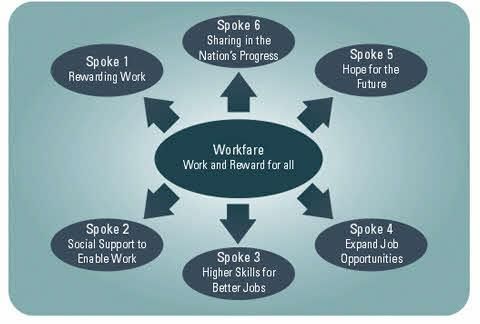 Why in News?
Why in News?
India is increasingly recognizing the unique challenges faced by app-based gig workers, leading to efforts aimed at integrating them into social security systems. Recent proposals, including health coverage under Ayushman Bharat, registration on the eShram portal, and a transaction-based pension policy, indicate a progressive shift in policy. However, these initiatives also highlight significant structural weaknesses in India's existing social protection framework.
Key Takeaways
- The shift towards recognizing gig workers in social security marks a departure from traditional employment models.
- The proposed universal account number for tracking earnings is a significant advancement for gig workers.
- The existing social protection framework remains flawed, illustrating a piecemeal approach to reforms.
Additional Details
- Piecemeal Commitment: India has not ratified the International Labour Organisation’s Social Security (Minimum Standards) Convention, 1952, which reflects a limited commitment to comprehensive labour welfare.
- Over Reliance on Welfare Boards: Welfare boards often suffer from inefficiency and mismanagement, leading to unspent funds and delayed benefits, as shown in recent reports.
- Fragmented Approach: Various worker groups are treated as separate entities, making access to social protection uneven and dependent on bureaucratic classifications rather than actual needs.
- Reinforcing Exclusion: Focusing on gig workers while neglecting other informal workers risks creating a hierarchy of deservingness among informal labor.
- Short Term Fixes Over Structural Reform: New welfare boards for different worker categories do not address systemic issues in governance and enforcement.
To prepare for the future of work, India must adopt a more inclusive and universal model of social protection that adapts to future changes. The Social Security Code, despite its limitations, could serve as a foundational framework for progressive state-level innovations. Without addressing the systemic weaknesses in social welfare, the current reforms may not reach their full potential. A robust welfare architecture is essential to ensure that no worker is left behind.
GS3/Science and Technology
Three Gorges Antarctic Eye Telescope
Why in News?
China has recently launched the Three Gorges Antarctic Eye telescope at its Zhongshan Station in Antarctica, marking a significant advancement in scientific research capabilities in one of the most extreme environments on Earth.
Key Takeaways
- The telescope has a diameter of 3.2 meters.
- It is capable of detecting both radio waves and millimeter waves.
- This technology aids in the study of key astronomical phenomena, including neutral hydrogen and ammonia molecules.
- The telescope operates under extreme conditions, with temperatures dropping below -60°C and facing strong winds.
Additional Details
- Construction Challenges: The telescope is built in one of the harshest environments on Earth, presenting significant challenges during its construction.
- Scientific Importance: The ability to detect invisible light types allows scientists to examine gas movement and understand star formation more comprehensively.
This telescope represents a major technological achievement and enhances China's research capabilities in astronomy, particularly in studying the universe's fundamental components.
|
41 videos|5359 docs|1134 tests
|
FAQs on UPSC Daily Current Affairs: 11th April 2025 - Current Affairs & Hindu Analysis: Daily, Weekly & Monthly
| 1. What is the significance of the 150th Assembly of the Inter-Parliamentary Union (IPU)? |  |
| 2. How does the population-based process in delimitation affect representation in India? |  |
| 3. Who was Jyotiba Phule and what was his contribution to social awakening in India? |  |
| 4. What security issues are associated with the INS Varsha Naval Base? |  |
| 5. How does the CPCB's revision of the classification of industries impact environmental regulation? |  |
















